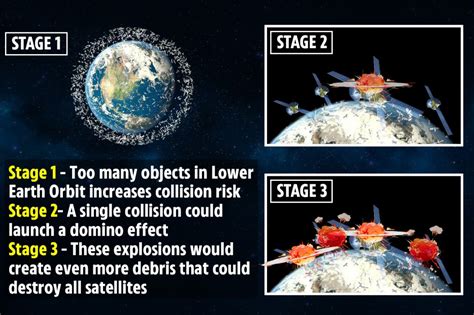The concept of the Kessler Syndrome, although explored frequently, continues to be misunderstood by the broader public. This phenomenon refers to a potentially catastrophic collisional cascade of space debris in low-Earth orbit (LEO) that could render parts of space unusable. Interestingly, several users on forums like Hacker News express that media coverage on this topic often strays into dramatic doom-mongering rather than focusing on the real engineering and economic challenges involved. In this article, we aim to dissect the technical intricacies, potential solutions, and broader implications for space activities should Kessler Syndrome seriously impact our ability to utilize space effectively.
What often goes unmentioned in discussions about space debris is the role of Earth’s atmosphere in mitigating some of these risks. For example, lower altitudes in LEO experience higher atmospheric drag, which can help in deorbiting smaller debris quickly. However, this gives a false sense of security because objects in higher orbits do not benefit from this self-cleaning mechanism. As a case in point, the Hubble Space Telescope has been slowly descending and will eventually require a boost to continue its operations, as discussed in a Smithsonian Magazine article. Imagine, then, the challenges faced by debris that lies in non-decaying orbits. Thus, the conversation must broaden to include the technical aspects of deorbiting and debris management.
One potential solution suggested by various commentators involves leveraging economics to turn this problem on its head. Imagine a future where space mining becomes economically viable, to the extent that collecting space junk for raw materials becomes cheaper than launching fresh materials from Earth or even mining asteroids. This possibility raises intriguing questions about future orbital economics. However, as commenters accurately point out, the engineering challenges are enormous—capturing and deorbiting objects traveling at orbital speed, often from different directions, isn’t as straightforward as cleaning up trash on Earth’s surface.
From an engineering standpoint, the costs associated with deorbiting even small pieces of junk are substantially higher than the costs of launching payloads. For a Falcon 9 rocket, the cost per kilogram to LEO is around $40 million for 20,000kg, which translates to approximately $2 per gram. In contrast, the cost of deorbiting space debris is several orders of magnitude higher. Therefore, a sustainable economic model for space cleanup must evolve to make it viable. One innovative idea involves using ground-based lasers to apply small but continuous forces to space debris, gradually lowering their orbits until atmospheric drag takes over. This concept carries its own set of technological challenges and high-energy requirements but could revolutionize how we manage space debris.
It’s also essential to recognize the broader regulatory challenges. Implementing international liability and accountability measures is critical but complicated by the reluctance of some nations to accept rules-based accountability for space activities. For instance, companies might be forced to internalize the costs of disposal if proper regulatory measures are in place. This concept, however, raises economic concerns. Just as with plastic recycling on Earth, merely offloading responsibility onto manufacturers doesn’t necessarily result in effective solutions. More comprehensive regulations, possibly including heavy taxation on materials with negative externalities, could offer a better way forward, albeit with significant resistance from stakeholders reluctant to incur additional costs.
Overall, the potential risks posed by Kessler Syndrome are real and multifaceted, requiring coordinated efforts across engineering, economic, and regulatory domains. While some solutions seem within the realm of scientific fiction today, gradual advancements in orbital technologies and international cooperation could pave the way for a safer, more sustainable use of space. Whether through high-tech solutions like space lasers or economic incentives that turn debris into valuable resources, the journey to mitigating this threat will require innovation, investment, and perhaps most importantly, global collaboration.


Leave a Reply